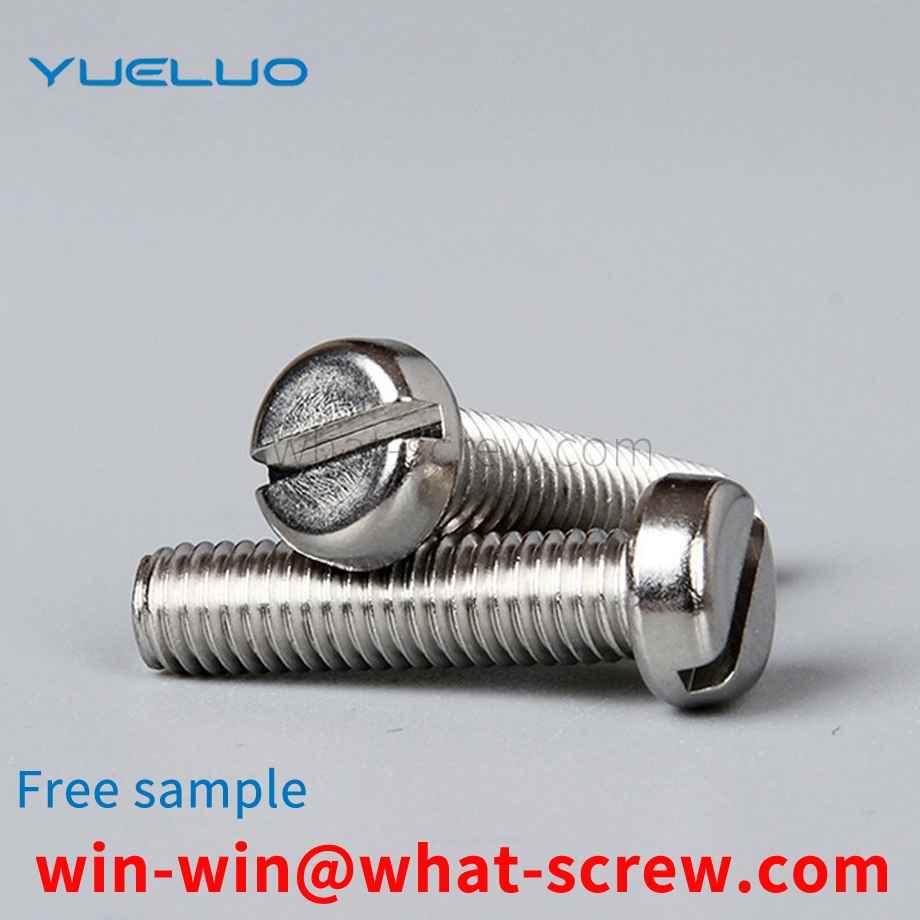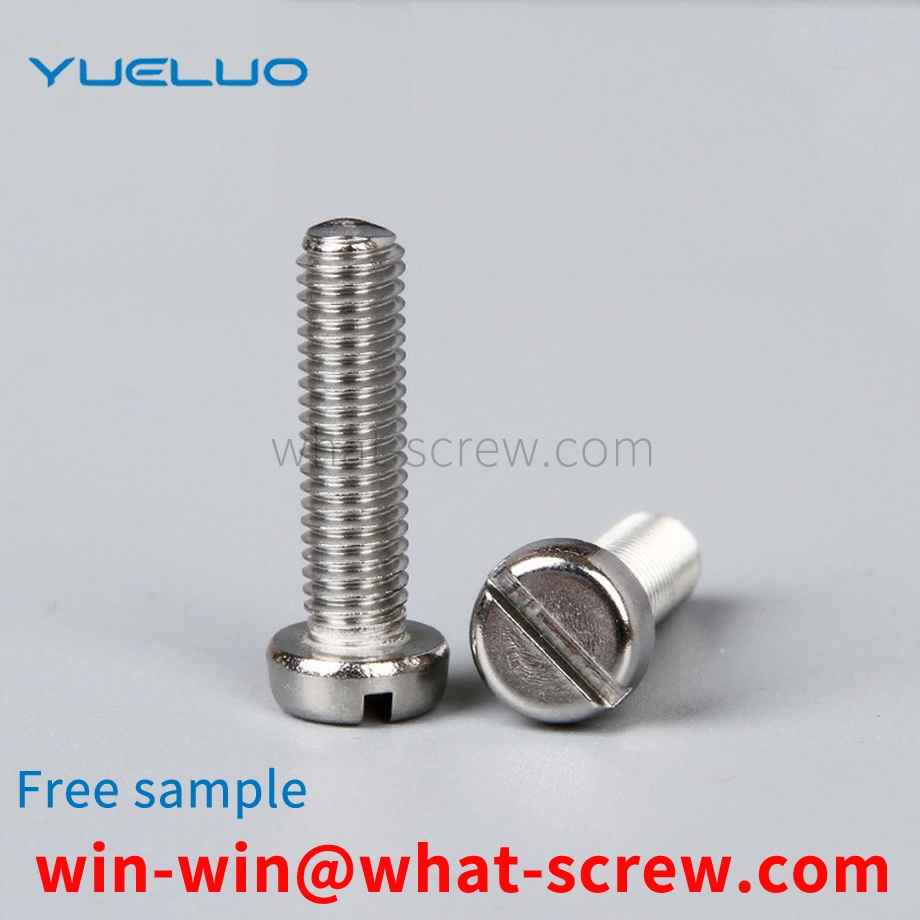The quality of electroplating is measured primarily by its corrosion resistance, followed by appearance. Corrosion resistance is to imitate the working environment of the product, set it as the test condition, and perform a corrosion test on it. The quality of electroplating products shall be controlled from the following aspects: 1. Appearance: Partial uncoated, scorched, rough, gray, peeling, crusted, and obvious stripes are not allowed on the surface of the product, and pinholes, pitting, and black plating are not allowed. Slag, loose passivation film, cracks, peeling off and serious passivation marks. 2. Coating thickness: The operating life of fasteners in corrosive atmosphere is proportional to its coating thickness. The general recommended thickness of economical electroplating coating is 0.00015in ~ 0.0005in (4 ~ 12um). Hot-dip galvanizing: the standard average thickness is 54 um (43 um for diameter ≤ 3/8), and the minimum thickness is 43 um (37 um for diameter ≤ 3/8). 3. Coating distribution: With different deposition methods, the aggregation method of the coating on the surface of the fastener is also different. During electroplating, the coating metal is not uniformly deposited on the peripheral edge, and a thicker coating is obtained at the corners. In the threaded portion of the fastener, the thickest coating is located on the thread crest, gradually thinning along the flank of the thread, and the thinnest deposit is at the bottom of the thread, while hot dip galvanizing is just the opposite, the thicker coating is deposited on the inside corners and On the bottom of the thread, mechanical plating tends to deposit the same metal as hot-dip plating, but is smoother and has a much more uniform thickness over the entire surface [3]. 4. Hydrogen embrittlement: During the processing and processing of fasteners, especially in the pickling and alkali washing before plating and the subsequent electroplating process, the surface absorbs hydrogen atoms, and the deposited metal coating then traps hydrogen. When the fastener is tightened, the hydrogen is transferred towards the most stressed parts, causing the pressure to build up beyond the strength of the base metal and producing microscopic surface cracks. Hydrogen is particularly active and quickly seeps into the newly formed fissures. This pressure-rupture-penetration cycle continues until the fastener breaks. Usually occurs within a few hours after the first stress application. To eliminate the threat of hydrogen embrittlement, fasteners are heated and baked as soon as possible after plating to allow hydrogen to seep out of the plating, typically at 375-4000F (176-190C) for 3-24 hours. Since mechanical galvanizing is non-electrolyte, this virtually eliminates the threat of hydrogen embrittlement, which exists in galvanizing using electrochemical methods. In addition, due to engineering standards, it is forbidden to hot-dip galvanize fasteners with hardness higher than HRC35 (Imperial Gr8, metric 10.9 and above). Therefore, hydrogen embrittlement rarely occurs in hot-dip plated fasteners. 5. Adhesion: Cut or pry off with a solid tip and considerable pressure. If, in front of the blade tip, the coating peels off in flakes or skins, exposing the base metal, the adhesion shall be considered insufficient.
At present, with the continuous growth of the demand for communication products, higher and higher requirements are put forward for the production capacity of equipment manufacturers, and at the same time, the requirements for the cost, weight and reliability of communication products are also more and more stringent. In order to facilitate the positioning of the equipment, pins are often used to complete the equipment, and a certain cost is incurred for its manufacture and assembly. In the past, such parts have been assembled in the form of threads. In order to ensure that the assembly height is within the specified range and to prevent loosening, bar turning is often used to form threads and positioning steps, and thread pinning glue is used in the assembly, and the cost of machining is relatively high. Large, more material waste. Based on the above drawbacks, in order to better solve this problem, some existing manufacturers use the interference fit riveting method, which solves the problem of material waste and anti-loosening, but the inner diameter of the pin hole and the outer diameter of the pin are matched. The machining accuracy of the machine is relatively high. Once the matching size is out of tolerance, a second matching is required, which wastes working hours and increases the slack time.
The assembly of hollow rivets and flat head screws riveted on the cover plate is assembled in the product. Compared with the method of connecting with bolts, the loading and unloading speed can improve the efficiency by about 80% to 90%, and is widely used. The assembly needs to riveted hollow rivets and flat head screws on the cover plate, and ensure that the riveted flat head screws can rotate flexibly. When riveting, it is necessary to use special tools to riveted the hollow rivets, flat head screws and cover plates together for riveting. In the existing riveting process, the oval head screw is often damaged due to the action of external force. The positioning process is cumbersome and the work efficiency is low.
Anchor bolts can be divided into fixed anchor bolts, movable anchor bolts, expansion anchor anchor bolts and adhesive anchor bolts. According to the different shapes, it is divided into: L-shaped embedded bolts, 9-shaped embedded bolts, U-shaped embedded bolts, welded embedded bolts, and bottom plate embedded bolts.
flat washer, an annular groove is formed on the outer side of the upper surface of the flat washer, and a sealing ring is embedded in the annular groove, at least five circularly equidistantly arranged cylinders are fixed on the upper surface of the flat washer, and the The upper surface of the flat washer is provided with a circular hole that communicates with its bottom, a collar is arranged in the circular hole, an upper circular ring is fixed above the collar, a lower circular ring is fixed below the collar, and the upper circular The diameter of the ring is the same as the diameter of the lower ring, the diameter of the collar is smaller than the diameter of the upper ring, the diameter of the collar is consistent with the diameter of the circular hole, and there are at least three equally spaced holes in the middle of the outer wall of the flat washer. A circular groove, the outer wall of the flat washer is fixed with at least three reinforcing blocks staggered with the circular groove, and the reinforcing blocks and the flat washer are welded into one piece.
We have many years of experience in the production and sales of screws, nuts, flat washers, etc. The main products are: A-class large washers, 6mm cross-hole splint nuts, round cap rivets, gasket combination screws and other products, we can provide you with suitable products for you. Fastener Solutions.



















 Service Hotline
Service Hotline




